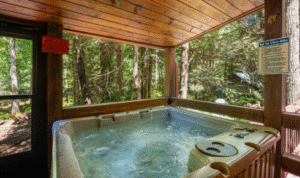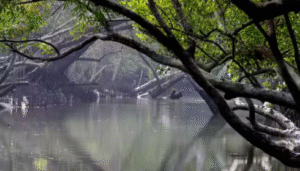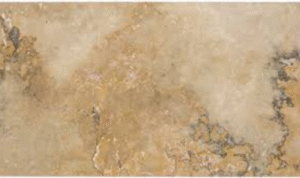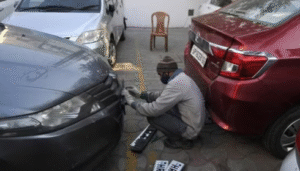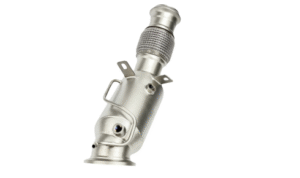
Manaslu Trek
The Manaslu Treks offer an extraordinary journey through the heart of the Nepalese Himalayas. Known for its stunning landscapes, rich cultural heritage, and the towering presence of Mount Manaslu, the eighth highest peak in the world, this trek provides a less crowded yet equally mesmerizing alternative to the more popular Annapurna and Everest regions.
Importance and Appeal of the Manaslu Region
The Manaslu Region holds immense appeal due to its unspoiled beauty and cultural richness. Trekkers can experience remote villages, ancient monasteries, and the warm hospitality of the local people, all while enjoying breathtaking mountain vistas and diverse flora and fauna.

Geographical Information
Location of Manaslu Region
The Manaslu Region is situated in the west-central part of Nepal, within the Gorkha District. It is part of the Mansiri Himal range, bordered by the Annapurna Conservation Area to the west and the Tibetan Plateau to the north.
Climate and Weather Conditions
The climate in the Manaslu Region varies significantly with altitude. Lower elevations experience a temperate climate, while higher altitudes have an alpine climate. The region experiences four distinct seasons:
- Spring (March to May): Mild temperatures and blooming rhododendrons.
- Summer (June to August): Monsoon season with heavy rainfall.
- Autumn (September to November): Clear skies and stable weather.
- Winter (December to February): Cold temperatures and snowfall at higher altitudes.
Best Times to Visit
The ideal times to embark on the Manaslu Trek are during the spring and autumn seasons. These periods offer the best weather conditions, with clear skies, moderate temperatures, and minimal precipitation.
Cultural Insights
Local Customs and Traditions
The Manaslu Region is home to a mix of Gurung and Tibetan communities, each with its unique customs and traditions. Visitors can observe traditional agricultural practices, religious rituals, and vibrant festivals that reflect the rich cultural tapestry of the area.
Festivals and Celebrations
Major festivals in the region include Losar (Tibetan New Year), Mani Rimdu, and various harvest festivals. These celebrations are marked by colorful dances, music, and religious ceremonies, providing a deep insight into the local way of life.
Interaction with Local Communities
Engaging with the local communities is a highlight of the Manaslu Trek. Trekkers are often welcomed into homes and teahouses, where they can share stories, enjoy local cuisine, and learn about the traditional lifestyles of the Gurung and Tibetan people.

Manaslu Base Camp
Manaslu Base Camp is a key destination on the trek, offering stunning views of Mount Manaslu and the surrounding peaks. It serves as the starting point for mountaineers aiming to summit Manaslu and provides a striking backdrop for trekkers.
Larkya La Pass
The Larkya La Pass is one of the highest points on the trek, standing at an elevation of 5,160 meters. The pass offers panoramic views of the Himalayan range, including peaks like Himlung Himal, Cheo Himal, and Kang Guru.
Tsum Valley
The Tsum Valley is a hidden gem, often described as a sacred Himalayan pilgrimage valley. Rich in ancient art, culture, and religion, the valley offers a serene trekking experience with visits to monasteries, caves, and unique Tibetan Buddhist settlements.
Pungyen Gompa
Pungyen Gompa is a serene monastery located in a picturesque setting with spectacular views of Mount Manaslu. It’s an ideal spot for meditation and gaining insight into the spiritual practices of the region.
Birendra Lake
Birendra Lake is a glacial lake situated near Sama Gaun. The pristine blue waters of the lake, surrounded by towering peaks, create a breathtaking and tranquil environment perfect for rest and reflection.
Activities and Experiences
Trekking Routes and Trails
The Manaslu Circuit Trek is the most popular route, taking trekkers through diverse landscapes, from lush subtropical forests to rugged alpine terrains. Side trips to places like the Tsum Valley and Manaslu Base Camp add to the adventure.
Wildlife and Nature Exploration
The region is part of the Manaslu Conservation Area, which hosts a variety of wildlife including snow leopards, Himalayan tahr, and several bird species. Trekkers can enjoy the natural beauty and biodiversity of the area.
Cultural Tours
Cultural tours offer an opportunity to explore the traditional villages, monasteries, and cultural sites along the trek. These tours provide deeper insights into the local way of life and heritage.
Photography Opportunities
With its stunning landscapes and vibrant cultural scenes, the Manaslu Region is a paradise for photographers. Key spots for photography include Larkya La Pass, Manaslu Base Camp, and the traditional villages along the trail.
Travel Tips
Packing Essentials
Key items to pack for the trek include sturdy trekking boots, layered clothing for varying temperatures, a high-quality sleeping bag, trekking poles, a first aid kit, and essential toiletries. It’s also important to carry sufficient snacks, water purification tablets, and a reliable map or GPS device.
Accommodation Options
Accommodation along the Manaslu Trek primarily consists of teahouses and lodges, which offer basic amenities such as meals, beds, and communal restrooms. Booking in advance during peak seasons is advisable to secure a spot.
Transportation Guide
The trek typically starts with a drive from Kathmandu to Soti Khola. From there, the trek is on foot, passing through various villages and scenic landscapes. After completing the trek, transportation back to Kathmandu is via a drive from Besisahar.
Permits and Documentation
Trekkers need to obtain several permits, including the Manaslu Restricted Area Permit (RAP), the Manaslu Conservation Area Project (MCAP) Permit, and the Annapurna Conservation Area Project (ACAP) Permit. These can be acquired through a trekking agency or the Nepal Tourism Board in Kathmandu.
Safety and Health Precautions
Altitude Sickness Awareness
Altitude sickness is a serious concern on the Manaslu Trek. It’s important to ascend gradually, take rest days for acclimatization, stay hydrated, and recognize the symptoms of altitude sickness. Medications such as Diamox can help, but descending to a lower altitude is the best remedy.
Vaccinations and Health Preparations
Before trekking, ensure you are up to date with vaccinations such as hepatitis A and B, typhoid, cholera, and tetanus. Carry a comprehensive first aid kit, and be prepared for minor health issues such as blisters, dehydration, and gastrointestinal problems.
Safety Measures on the Trail
Always trek with a guide or in a group, stay on marked trails, and avoid trekking alone. Be aware of your surroundings, particularly in areas prone to landslides or avalanches. Keeping a reliable communication device and a detailed map is essential for safety.
Budget Planning
Cost Breakdown
The cost of the Manaslu Trek includes permits, transportation, accommodation, food, guide and porter fees, and personal expenses. On average, a 15-20 day trek can cost between $1,500 to $2,500, depending on the services and level of comfort chosen.
Money-Saving Tips
To save money, consider trekking during the shoulder seasons, sharing costs with a group, and booking services directly rather than through intermediaries. Carrying some cash in local currency is also essential as ATMs are scarce along the trail.
Recommended Budgeting Tools
Using budgeting tools such as Trail Wallet or Spendee can help keep track of expenses. Planning and tracking your budget helps in managing costs efficiently and avoiding unexpected expenses.
Local Cuisine
Traditional Foods to Try
Local dishes such as dal bhat (lentil soup with rice), momos (dumplings), thukpa (noodle soup), and yak cheese are must-tries. These meals are nutritious and provide the necessary energy for trekking.
Popular Restaurants and Teahouses
Teahouses along the trail offer a variety of local and international cuisines. Notable places include Shangri-La Guest House in Namrung and Gompa Lodge in Sama Gaun. These establishments are known for their hospitality and delicious food.
Food Safety Tips
To ensure food safety, stick to freshly cooked meals, drink boiled or treated water, and avoid raw vegetables and unpeeled fruits. Carrying water purification tablets or a portable water filter is advisable.
Personal Stories or Case Studies
Testimonials from Trekkers
Many trekkers have shared their life-changing experiences on the Manaslu Trek. For instance, John, an avid trekker from Canada, described it as “the most breathtaking and culturally enriching experience of my life.”
Inspirational Trekking Stories
Inspirational stories abound, such as that of a group of friends who undertook the trek to raise awareness and funds for a charitable cause, highlighting the potential for personal growth and community impact.
Expert Insights
Interviews with Trekking Guides
Experienced trekking guides offer invaluable insights. According to Sherpa Mingma, “Preparation and respect for the mountains are key. Always listen to your body and take the time to acclimatize.”
Advice from Experienced Trekkers
Veteran trekkers recommend a gradual pace, proper hydration, and mental preparedness. Sarah, who completed the trek twice, advises, “Enjoy the journey, immerse yourself in the culture, and don’t rush. The mountains have their own pace.”
Conclusion
Summary of Key Points
The Manaslu Trek is an extraordinary adventure offering stunning landscapes, rich cultural experiences, and the thrill of exploring remote Himalayan regions. Proper preparation, awareness of health and safety, and respectful interaction with local communities enhance the trekking experience.
Call to Action for Future Trekkers
Embark on the journey of a lifetime by planning your Manaslu Trek. Whether you seek adventure, cultural immersion, or personal growth, the Manaslu Region offers it all. Prepare well, respect the mountains, and embrace the adventure.
FAQs
What is the difficulty level of the Manaslu Trek?
The Manaslu Trek is considered moderately difficult, suitable for trekkers with some previous experience and a good level of physical fitness.
How long does the Manaslu Trek take?
The trek typically takes 15 to 20 days, depending on the itinerary and acclimatization schedule.
What permits are required for the trek?
Trekkers need the Manaslu Restricted Area Permit (RAP), Manaslu Conservation Area Project (MCAP) Permit, and Annapurna Conservation Area Project (ACAP) Permit.
Is it safe to trek Manaslu alone?
It is not recommended to trek alone due to the remote and challenging nature of the trail. Trekking with a guide or in a group is safer and more enjoyable.
What is the best time of year for the trek?
The best times to trek are during the spring (March to May) and autumn (September to November) seasons.
Are there any altitude sickness concerns?
Yes, altitude sickness is a concern. Proper acclimatization, hydration, and recognizing symptoms early are crucial for safety.
What should I pack for the trek?
Essential items include trekking boots, layered clothing, a sleeping bag, trekking poles, first aid kit, and snacks. A detailed packing list can help ensure you have everything you need.
How can I prepare physically for the trek?
Physical preparation should include cardiovascular exercises, strength training, and hiking with a backpack to simulate trekking conditions.
What are the accommodation options along the trail?
Accommodation primarily consists of teahouses and lodges offering basic amenities. Booking in advance during peak seasons is advisable.
Can I do the Manaslu Trek independently?
Independent trekking is possible but requires careful planning, obtaining necessary permits, and ensuring safety measures. Hiring a guide is recommended.
What kind of food is available during the trek?
Teahouses offer a variety of local dishes like dal bhat, momos, and thukpa, as well as some international cuisines.
How much does the Manaslu Trek cost?
The cost varies but generally ranges from $1,500 to $2,500 for a 15-20 day trek, including permits, accommodation, and food.
Are there any guided tours available?
Yes, several trekking agencies offer guided tours, providing experienced guides, porters, and comprehensive support.
What wildlife might I encounter on the trek?
The Manaslu Conservation Area is home to wildlife such as snow leopards, Himalayan tahr, and various bird species. Sightings depend on the season and trail conditions.

